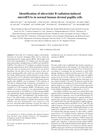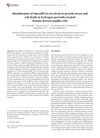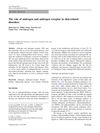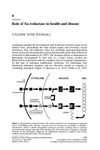Epigallocatechin Gallate-Mediated Alteration of the MicroRNA Expression Profile in 5α-Dihydrotestosterone-Treated Human Dermal Papilla Cells
January 2016
in “
Annals of Dermatology
”
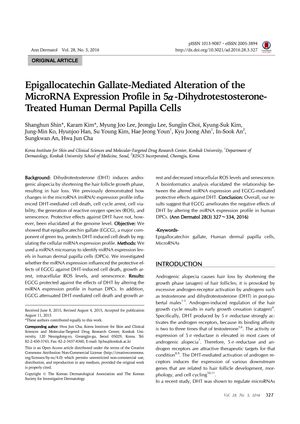
TLDR Green tea component EGCG may help prevent hair loss by changing microRNA levels in certain scalp cells.
In the 2016 study, researchers explored how epigallocatechin gallate (EGCG), a green tea component, affects human dermal papilla cells (DPCs) exposed to 5α-dihydrotestosterone (DHT), a hormone linked to androgenic alopecia. They discovered that EGCG could prevent DHT-induced cell death, lower intracellular reactive oxygen species (ROS) levels, and reduce cellular senescence. The study identified significant changes in the expression of 53 microRNAs (miRNAs) due to EGCG treatment, which are crucial in cell processes like anti-oxidation, apoptosis, proliferation, aging, and cell cycle regulation. These findings suggest that EGCG may counteract the adverse effects of DHT on hair follicles by modulating miRNA expression, potentially offering a new treatment strategy for androgenic alopecia. The research was funded by the KU Research Professor Program of Konkuk University, the Ministry of Science, ICT and Future Planning, and the Korean Health Technology R&D Project, Ministry of Health & Welfare, Republic of Korea.

